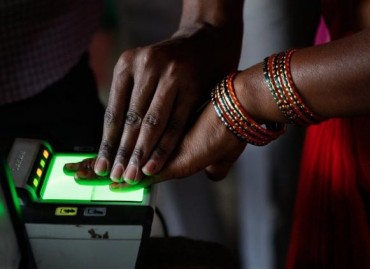The Antichrist will not be able to fully set up his government until these technologies are pooled into an integrated network with universal standards?an obstacle that might not be an obstacle much longer. Governments and industry are setting boundaries and expanding their global electronic network by sharing information, services, and technology. As more countries turn to the latest technology to help solve their particular social and economic problems, they expand the network?s reach and capabilities. The level of technological development now varies greatly from nation to nation, but the whole system could be ?online? in a relatively short time. – Joseph Candel
Via NetSecurity.org
 In the last two years, over 200 million Indian nationals have had their fingerprints and photographs taken and irises scanned, and given a unique 12-digit number that should identify them everywhere and to everyone.
In the last two years, over 200 million Indian nationals have had their fingerprints and photographs taken and irises scanned, and given a unique 12-digit number that should identify them everywhere and to everyone.
This is only the beginning, and the goal is to do the same with the entire population (1.2 billion), so that poorer Indians can finally prove their existence and identity when needed for getting documents, getting help from the government, and opening bank and other accounts.
This immense task needs a database that can contain over 12 billion fingerprints, 1.2 billion photographs, and 2.4 billion iris scans, can be queried from diverse devices connected to the Internet, and can return accurate results in an extremely short time.
The program – dubbed UIDAI – is lead by techno tycoon Nandan Nilekani, and is already a big success, as its effectiveness has been proved by a number of trials that allowed citizens to open bank accounts electronically, receive payments from the government directly into them, and withdrawing the money from them by authenticating themselves on a slew of simple devices.
According to BBC‘s Saritha Rai, the database in question has an open source backbone, and it’s not locked into any specific hardware or software. The collected information – stored in a data centre in Bangalore – is secured by multiple layers of security, and it is transmitted to and from the database in encrypted form.
The 12-digit number each individual is assigned is unique and random, so it can’t be guessed. And the combination of photo, fingerprints of all ten hand fingers and iris scans of both eyes makes it practically impossible for someone not to get identified or to get identified as another person, especially after the three planned de-duplication checks are executed.
Using the latest biometric, cloud computing and connection technologies, this program is likely to become a great example for future ones dealing with even larger databases.



